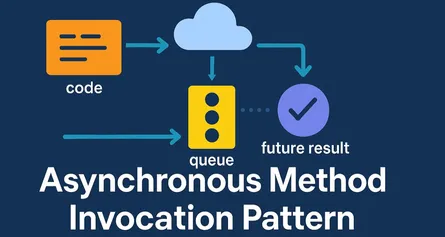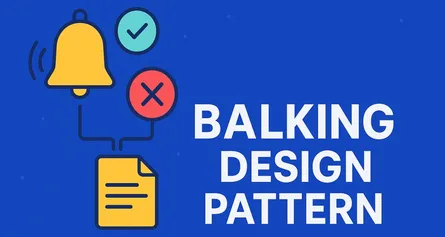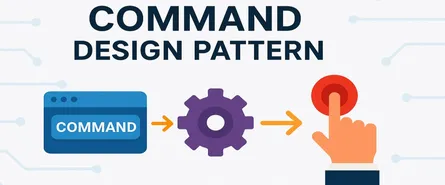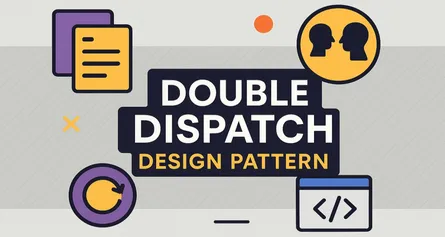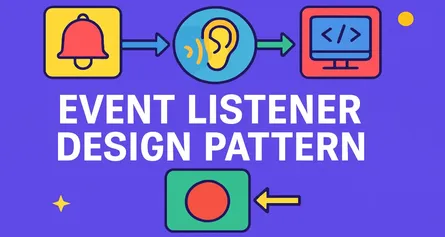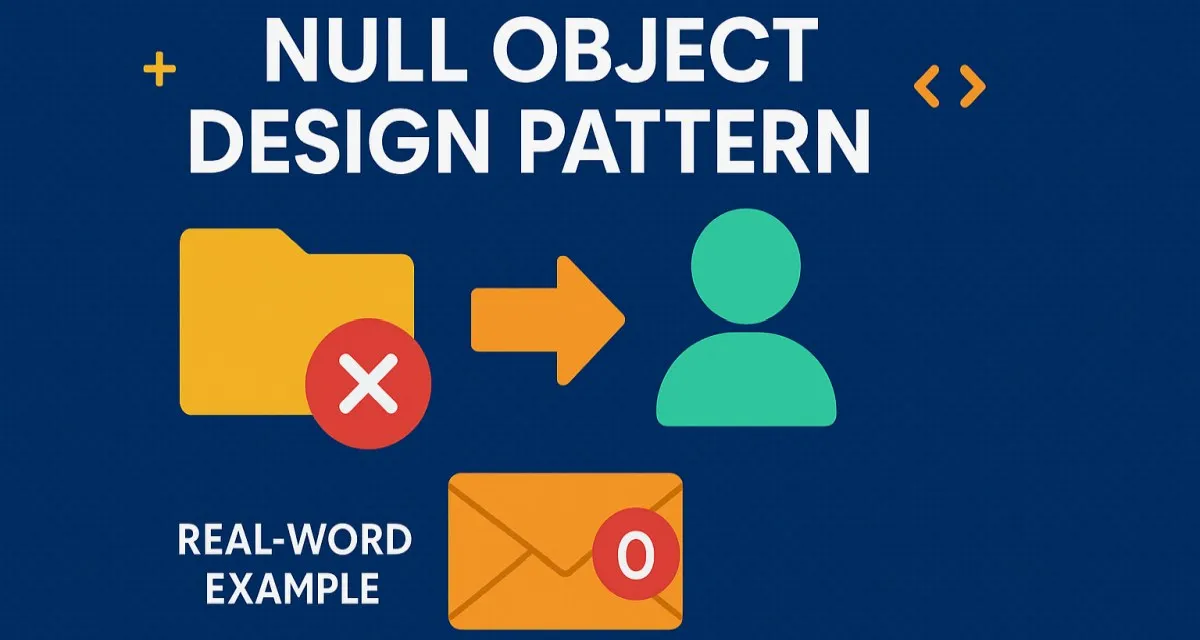
Null Object Design Pattern in C#: The Ultimate Guide (With Real Code Examples)
Introduction: Let’s Tame Those Sneaky Nulls!
Ever written code that suddenly blew up because something was… well, null?
You’re cruising along, calling methods like .DoSomething(), and BOOM! – a wild NullReferenceException appears!
If you’re like most developers (hey, no shame), you’ve fought the null beast many times. Wouldn’t it be awesome if your objects just behaved, even when they were supposed to represent “nothing”?
That’s where the Null Object Pattern swoops in like a superhero.
It saves your app from crash-landings and your brain from null-check burnout.
Ready to learn it the fun way, the practical way, the “I can use this tomorrow” way?
Let’s dive in.
What is the Null Object Design Pattern?
Okay, so first things first:
The Null Object Pattern is all about using an object that does nothing instead of returning null.
Wait, what?
Yup. Instead of returning null, you return a special, “do-nothing” object that implements the same interface as the real thing.
This way, your code can call methods on it safely without worrying about NullReferenceException. It’s like having an extremely polite but completely passive guest at your party — they’re there, but they won’t break anything.
In Simple Terms:
- Without the pattern: you have to keep checking
if (obj != null)everywhere. Exhausting! - With the pattern: you just call methods on the object — it handles “nothingness” internally.
Principles Behind the Null Object Pattern
You know how every good pattern isn’t just a hack — it’s built on some solid principles?
The Null Object Pattern is no different. It stands tall on these pillars:
1. Polymorphism
At the heart of it, Null Object uses polymorphism.
The Null Object is just another implementation of an interface or abstract class.
Real objects do real work.
Null objects do nothing — but they still fit in the same family.
It’s like that one cousin who always RSVPs “Maybe” but never shows up — they’re still family!
2. Behavioral Transparency
The idea is that your client code shouldn’t care whether it’s dealing with a real object or a null object.
Both must respond to the same methods, the same way.
(Well, the Null Object does it passively.)
3. Eliminate Explicit Null Checks
No more:
if (customer != null)
{
customer.SendPromotion();
}Instead, you write:
customer.SendPromotion();and trust that if customer is a Null Object, it will just… gracefully do nothing.
4. Fail-Safe Coding
Apps shouldn’t crash just because something’s missing.
Null Object turns potential disasters into quiet no-ops.
In short:
- Null Object = Safety + Simplicity + Clean Code
- Null Checks everywhere = Sadness + Bugs + Headaches
When Should You Use the Null Object Pattern?
Alright, let’s be real:
You don’t need the Null Object Pattern for every single class.
But when should you pull it out of your toolbelt?
Use it when:
- You return objects from methods and sometimes there’s “nothing” to return.
- Your app logic should keep flowing smoothly, even when an object is “absent.”
- You want to avoid sprinkling
if (obj != null)like confetti all over your code. - You want polymorphism to handle “do nothing” behavior without special casing.
Don’t use it when:
- The “null” or “empty” case should actually cause a failure (like security validation).
- Creating a “do nothing” object doesn’t make sense for your domain.
- You’re dealing with very simple, throwaway code where an
ifis just fine.
Remember:
Patterns are power tools — use them wisely, not everywhere.
Key Components of Null Object Pattern
Okay, let’s crack open the hood and see what’s inside.
Whenever you use the Null Object Pattern, you typically have these building blocks:
| Component | What It Does |
|---|---|
| Interface or Abstract Class | Defines the contract that real and null objects must fulfill. |
| Real Class | Does the real work, business logic. |
| Null Class | Does nothing but conforms to the same contract. |
| Client Code | Uses the object without worrying whether it’s real or null. |
Quick Visual:
+------------------+
| ICustomer | <-- Interface
+------------------+
▲
/ \
+--------+---------+
| RealCustomer | <-- Does real stuff
+------------------+
| NullCustomer | <-- Does nothing
+------------------+The client just interacts with ICustomer — it doesn’t know or care which type it has.
Cool, right?
Null Object Pattern in Action: C# Example
Let’s imagine we’re building a simple Customer Relationship Management (CRM) system.
You know, the kind where customers may or may not exist (think searching a database).
Instead of returning null when a customer isn’t found, we’ll return a NullCustomer.
Sound good? Let’s go!
Step 1: Define the Interface
First, we create an interface for our customers.
public interface ICustomer
{
string GetName();
void SendPromotion();
}What’s happening here?
GetName()gives us the customer’s name.SendPromotion()sends them a promotion (or at least tries to).
Both real customers and null customers will implement this.
Step 2: Create the Real Customer Class
Here’s a customer who actually exists and wants those sweet, sweet promo emails.
public class RealCustomer : ICustomer
{
private string _name;
public RealCustomer(string name)
{
_name = name;
}
public string GetName()
{
return _name;
}
public void SendPromotion()
{
Console.WriteLine($"Sending promotion to {_name}");
}
}Breakdown:
_nameholds the real customer’s name.GetName()just returns it.SendPromotion()does a little happy dance and sends the promo!
Step 3: Create the Null Customer Class
Now, the star of the show — the NullCustomer!
public class NullCustomer : ICustomer
{
public string GetName()
{
return "Guest";
}
public void SendPromotion()
{
// Do nothing
Console.WriteLine("No customer found. No promotion sent.");
}
}Breakdown:
GetName()returns something neutral (“Guest”), so your app doesn’t blow up.SendPromotion()deliberately does nothing (or optionally logs it nicely).
Notice: no exceptions, no null, no crashing.
The code just… keeps swimming .
Step 4: Create a Customer Factory
You probably don’t want to create customers manually every time, right?
Let’s make a factory to get either a RealCustomer or a NullCustomer.
public static class CustomerFactory
{
private static readonly List<string> ExistingCustomers = new List<string> { "Alice", "Bob", "Charlie" };
public static ICustomer GetCustomer(string name)
{
if (ExistingCustomers.Contains(name))
{
return new RealCustomer(name);
}
else
{
return new NullCustomer();
}
}
}Explanation:
- We have a list of valid customer names (
Alice,Bob,Charlie). - If the name exists, we return a
RealCustomer. - If not, we smoothly hand back a
NullCustomer.
Result:
No matter what, you always get a valid ICustomer instance.
No nulls ever sneak out.
Step 5: Put It All Together (Main Program)
Now the fun part: let’s use it.
class Program
{
static void Main(string[] args)
{
ICustomer customer1 = CustomerFactory.GetCustomer("Alice");
ICustomer customer2 = CustomerFactory.GetCustomer("Zelda");
Console.WriteLine($"Customer 1: {customer1.GetName()}");
customer1.SendPromotion();
Console.WriteLine($"Customer 2: {customer2.GetName()}");
customer2.SendPromotion();
}
}What will the output be?
Customer 1: Alice
Sending promotion to Alice
Customer 2: Guest
No customer found. No promotion sent.Notice:
No crashes.
No ugly null checks.
No hassle.
Just clean, smooth, professional code.
Why This is So Awesome
By using the Null Object Pattern, we:
- Avoid endless
if (customer != null)everywhere - Protect ourselves from sneaky
NullReferenceException - Make our code more polymorphic, clean, and easy to extend
Want to add a LoggingCustomer or a FakeCustomer later for testing?
No problem — just implement ICustomer!
Different Ways to Implement the Null Object Pattern (With C# Examples)
Alright, now that you’re a budding Null Object ninja , let’s spice things up.
There’s not just one way to cook this dish.
Depending on your style (and project needs), you can implement the Null Object Pattern in a few different ways.
Let’s break them down.
1. Manual Null Class (The Classic Way)
This is the way we just did it earlier.
You create a real class, and then you create a Null class that implements the same interface.
Example:
public class NullCustomer : ICustomer
{
public string GetName() => "Guest";
public void SendPromotion() => Console.WriteLine("No promotion sent.");
}Good for:
- Full control
- Custom “do-nothing” behavior
2. Singleton Null Object (The Memory Saver)
Why create lots of Null objects when you can have just one?
We make the NullCustomer a singleton.
Example:
public class NullCustomer : ICustomer
{
private static readonly NullCustomer _instance = new NullCustomer();
public static NullCustomer Instance => _instance;
private NullCustomer() { }
public string GetName() => "Guest";
public void SendPromotion() => Console.WriteLine("No promotion needed.");
}Good for:
- Reducing memory footprint
- Avoiding unnecessary instantiation
3. Using Anonymous Classes or Delegates (Super Quick)
Sometimes, you don’t even need a full class.
Just use an anonymous class or delegate in-line.
(Okay, C# doesn’t have real anonymous classes like Java, but you can fake it with minimal classes or lambdas.)
Example (using lambdas):
public class CustomerActions
{
public Action SendPromotion { get; set; } = () => { };
}
var customerActions = new CustomerActions();
customerActions.SendPromotion(); // does nothingGood for:
- Tiny behaviors
- Temporary setups
- Test doubles
Real-World Use Cases for Null Object Pattern
Now let’s get a little serious:
Where do people actually use this pattern in real life?
Here’s the scoop:
1. Logging Systems
Logging is everywhere.
But sometimes… no logger is available!
Instead of checking:
if (logger != null) logger.Log("something happened");You just give it a NullLogger that swallows the logs.
2. UI Components
Imagine a web app where some components (like a sidebar) are optional.
Rather than cluttering your rendering code with:
if (sidebar != null) sidebar.Render();Just use a NullSidebar that implements .Render() and does nothing!
3. Collections and Data Access
When a lookup in a database returns nothing, you can return a Null object instead of null.
For example:
Missing User → NullUser
Missing Order → NullOrder
4. Testing and Mocking
In unit tests, you often want an object that pretends to be there but doesn’t interfere.
Null Object pattern gives you easy mocks without the need for heavy testing frameworks.
Anti-Patterns to Avoid
Not every use of Null Object is golden.
Here’s how to accidentally mess it up — so you won’t.
1. Overusing Null Objects
If every single class in your app has a NullSomething, you might just be making your code harder to understand.
Solution:
Use Null Object only where it simplifies things.
2. Hiding Legitimate Errors
If something should throw an error (like missing payment information), don’t just silently swallow it with a Null Object.
Solution:
Sometimes, throwing an exception is the correct behavior!
3. Forgetting to Differentiate Behavior
Your Null Object shouldn’t behave exactly like a Real Object in every way.
Otherwise, your app might think something exists when it really doesn’t!
Solution:
Make Null Object behavior obviously passive.
Advantages of Null Object Pattern
Alright, here’s why developers ️ this pattern:
| Advantage | Why It Rocks |
|---|---|
| No More Null Checks | Cleaner, safer code. |
| Fail-Safe Behavior | Your app doesn’t crash when data is missing. |
| Simpler Client Code | Client classes don’t have to care about object existence. |
| More Polymorphism | Makes full use of object-oriented power. |
| Testing Is Easier | Use Null Objects in tests instead of mocks. |
Disadvantages of Null Object Pattern
Nothing’s perfect, and neither is the Null Object Pattern.
Here’s what can trip you up:
| Disadvantage | Why It Can Bite |
|---|---|
| Hides Errors | Sometimes, you actually want to know if something is missing! |
| Adds Complexity | More classes to maintain. |
| Misleading Behavior | Client code might assume a real object when it’s not. |
| Overhead in Large Systems | Hundreds of Null classes = chaos if you’re not careful. |
Conclusion: Your New Best Friend for Safe, Clean Code
Let’s wrap this up with a bow.
- The Null Object Pattern gives you a smart way to handle missing data without falling into the null-check trap.
- It’s perfect when you want safe defaults, smooth code, and no surprises.
- But — like seasoning — you should use it wisely, sparingly, and deliberately.
| Concept | Quick Summary |
|---|---|
| What it is | A pattern where “no object” is a real, behaving object. |
| Principles | Polymorphism, transparency, fail-safe code. |
| When to use | When “missing” objects should still behave safely. |
| Key parts | Interface, Real Object, Null Object, Client. |
| C# example | CRM system with RealCustomer and NullCustomer. |
Master it, and you’ll make your C# code stronger, cleaner, and way more professional.
** Your mission (should you choose to accept it):**
- Spot where you’re doing endless null checks.
- Replace them with elegant Null Objects.
- Watch your code turn into poetry.
Share this article
Help others discover this content
About Sudhir mangla
Content creator and writer passionate about sharing knowledge and insights.
View all articles by Sudhir mangla →